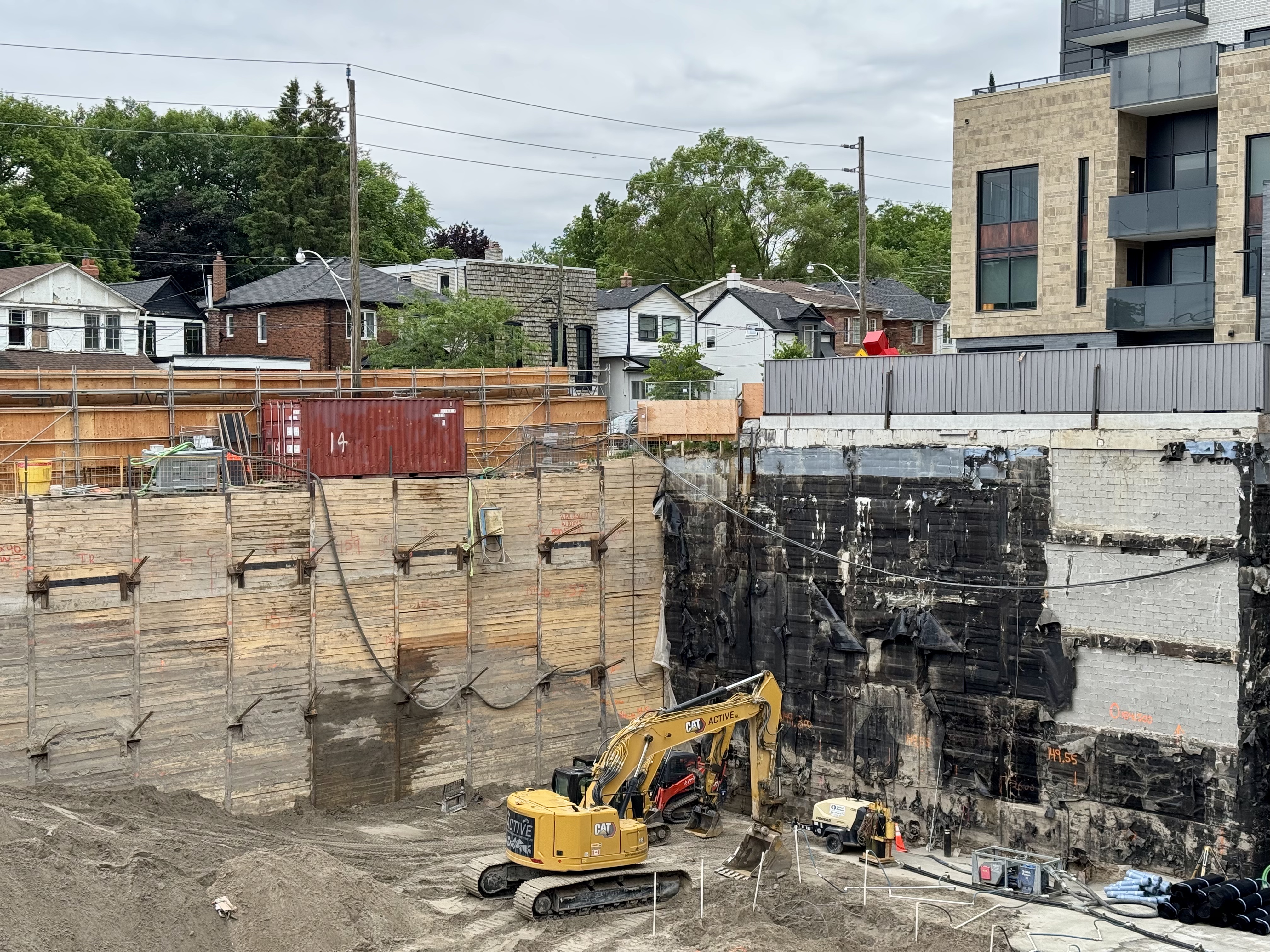THE GREEN LINE
DOCUMENTERS NOTES
Toronto’s updating its land-use plan — have your say
Land-use policy changes are coming to Toronto in order to abide by Ontario law, but residents have concerns over employment and school enrolment in the city.

condominium construction within the yonge and eglinton urban centre, june 26, 2025.


Sebastian Tansil
Caring mastermind who loves spending quality time with friends and family. Empathetic and precise economist by training. Loves amber yellow as it reminds him of people dearest to him.
June 27, 2025
These city meeting notes are part of Documenters Canada. Learn more about our program here.
Conflicts between the province and Toronto over land-use policies came into focus in a city-wide meeting this week.
In Canada, provincial law overrides municipal law, meaning that city policies can't contradict provincial legislation.
That’s why city staff hosted a public consultation on June 24 to update residents on changes to land-use policies mandated by the provincial government. These changes come after the minister of Municipal Affairs and Housing shared the 2024 Provincial Planning Statement (PPS), which dictates how cities regulate development and land use.
The meeting was part of a consistency exercise to ensure Toronto’s Official Plan — which is meant to improve transit, development and the environment — aligns with provincial rules.
Throughout the meeting, residents and city staff discussed how the PPS and Toronto's plan clash, especially when it comes to addressing employment and cultural preservation.
One conflict stood out: How "employment areas" are designated and/or converted to other uses.
Employment areas are places designated specifically for economic activity. They provide “locations for diverse employment options, keep the production of goods and shipping close to where people live, help maintain and grow the City’s economy and help achieve a balance in the growth of population and employment,” according to the city. In 2020, Toronto’s employment areas held over 400,000 jobs, which was about 25 per cent of all jobs and about 87 per cent of all manufacturing jobs in the city.
With the new PPS, municipalities are allowed to remove lands from employment areas at any time, no longer requiring a municipal comprehensive review and permits to converting the land to other uses, such as housing development.
Geoff Kettel, President of Federation of Urban Neighbourhoods, expressed concern that the changes will negatively impact neighbourhoods that include employment areas.
“ In my area, we're already seeing developers coming in and wanting mixed-use [buildings] willy-nilly [with] 39-storey towers being requested right next door to the employment area,” he said.
He added that such buildings would negatively impact traffic and parking. Without requirements for parking spaces, streets will be packed with parked cars across the road from new residential buildings, Kettel explained.
He urged city staff to come up with some criteria that would “stand the weight at the Ontario Land Tribunal.”
Rory McNeil, senior planner at the City of Toronto’s Planning Division, told Kettel that the city shares his concerns, but “we currently have a number of policies about how applications have to conform and be compatible with employment areas.”
Judy Gibson, a south Etobicoke resident and a co-chair of a high school parent council, said that the province removing the concept of urban growth centres (such as Etobicoke Centre, Yonge-Eglinton Centre, North York Centre, Scarborough Centre, etc.) from city planning would impact school enrolment. There are parts of the city where school enrollment is declining and other parts where schools are over-enrolled, she said.
“ How will the city direct growth towards infrastructures: schools, daycares and transit? Real transit, because GO train stations are not real transit yet,” she asked, adding that GO trains only take you as far as Union Station.
“How will you direct growth to the areas of the population where schools are under capacity and where there is the opportunity for growth to go?” she added.
McNeil responded that it remains a “core facet” of the Official Plan to concentrate development around transit.
“My point still is there’s no direction of where that growth goes…what's happening now is the growth is going wherever willy-nilly, wherever anybody wants,” she said.
She added that city planners should “look at where the growth opportunity [is] based on where there's infrastructure and where the schools’ populations are declining" versus areas that are growing rapidly already.
McNeil said that the city can consider the feedback to ensure that school enrolment is included in city planning.
Other changes discussed:
- Toronto now has to use provincial population and employment forecasts for planning purposes rather than its own forecasts.
- The PPS includes a new emphasis on early engagement with Indigenous communities on issues of cultural heritage and archaeology.
How can you chime in on the discussion?
A public open house will be planned for September 2025 and a report to the Planning and Housing Committee and City Council will be sent in the fall.
In the meantime, you can send your questions or thoughts to Rory McNeil at Rory.McNeil@toronto.ca and Ali Darouiche, Acting Project Coordinator Official Plan & Legislation Unit at the City Planning Division, at Ali.Darouiche@toronto.ca.
Fact-Check Yourself
Sources and
further reading
Don't take our word for it —
check our sources for yourself.
Care about our city, but don't know how to make it better? Sign up for simple, step-by-step guides to solving problems in your neighbourhood — one small action at a time.